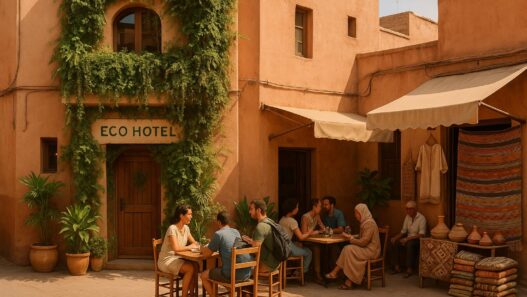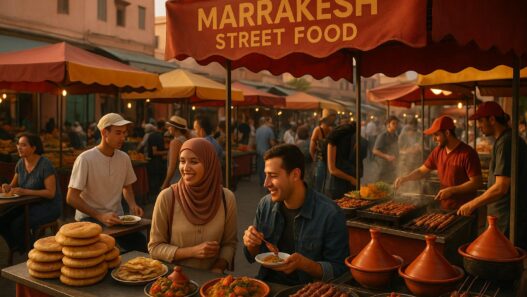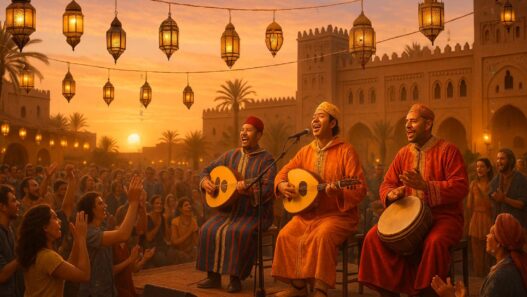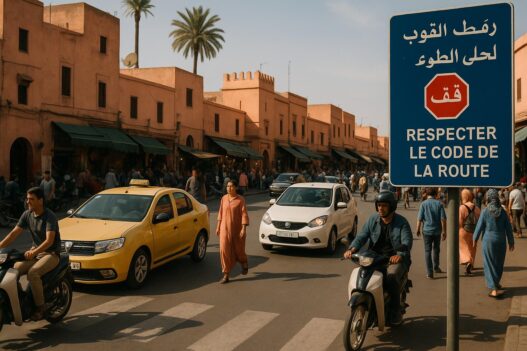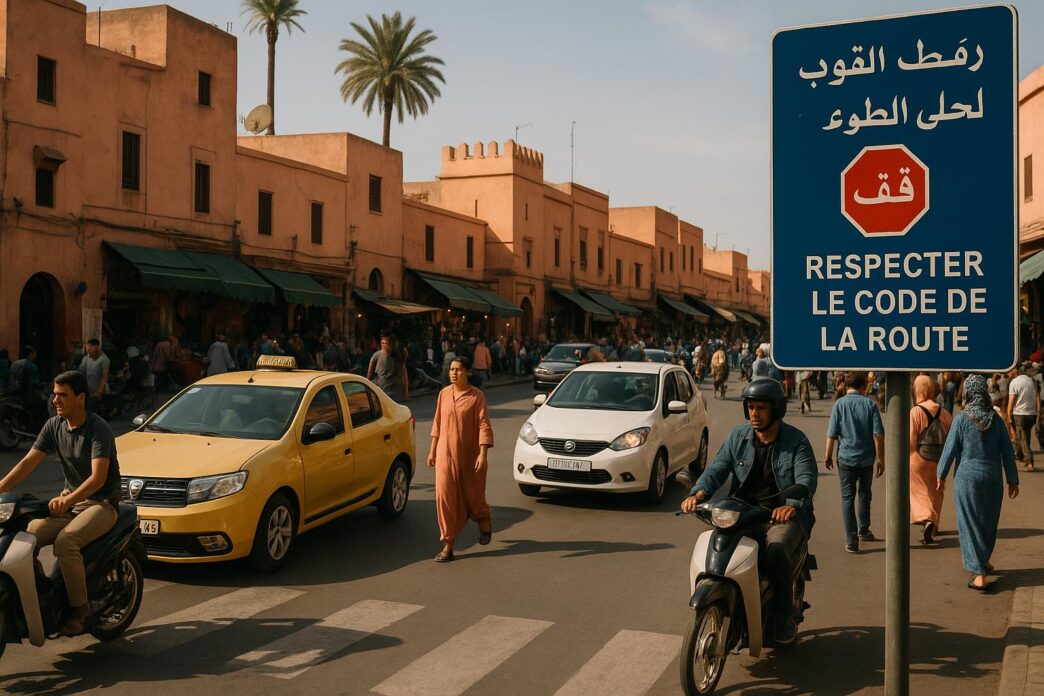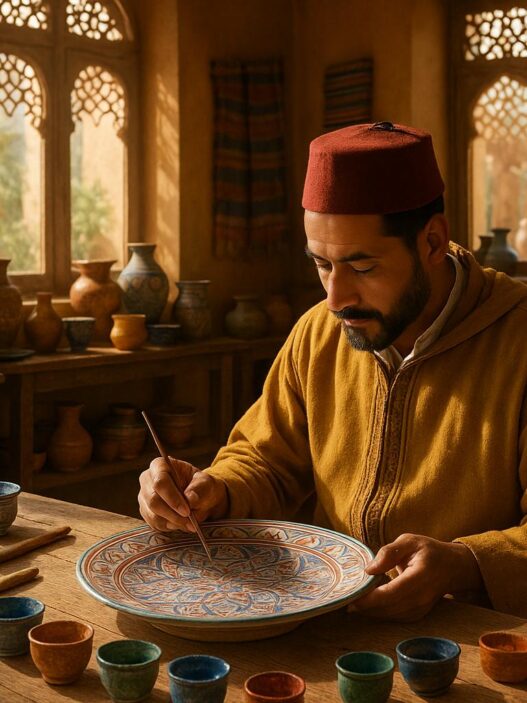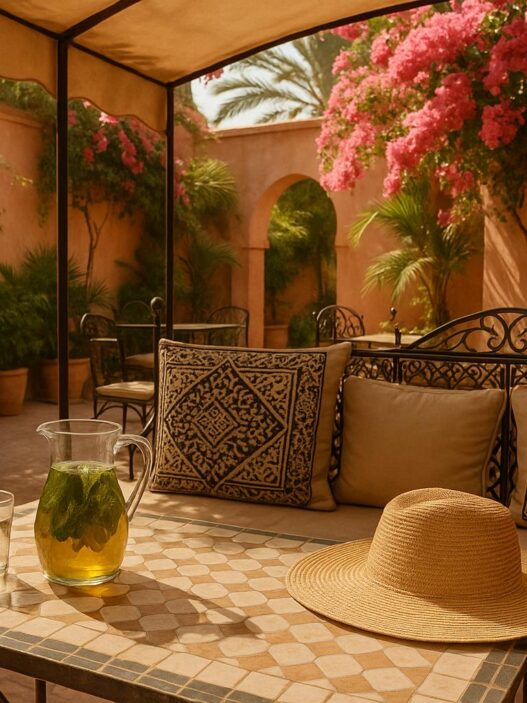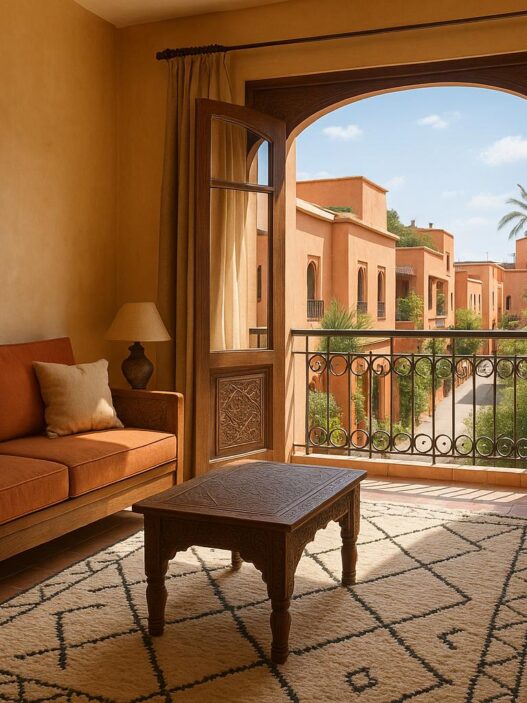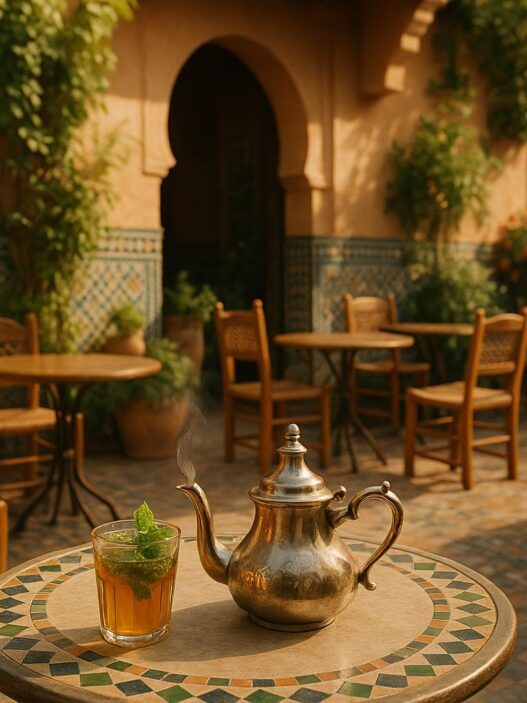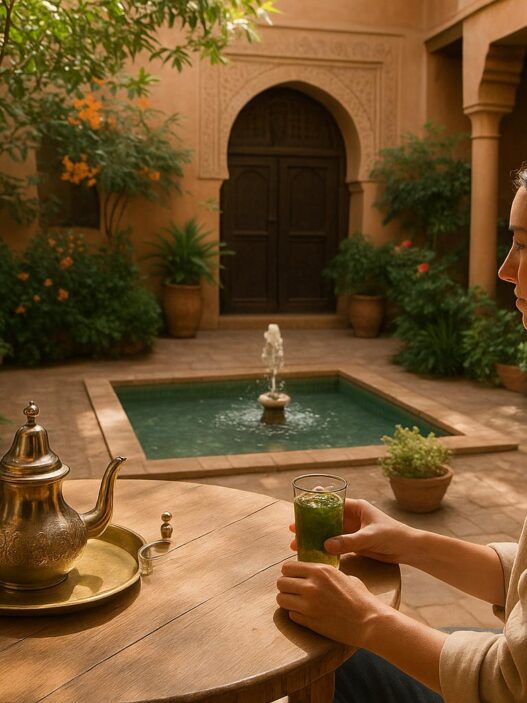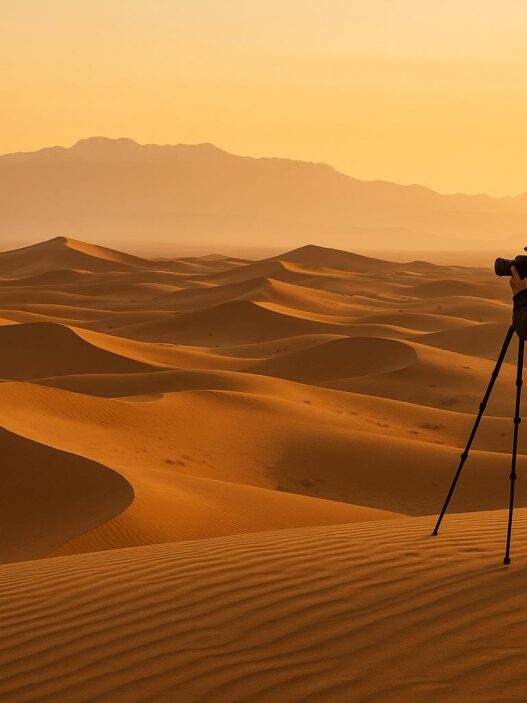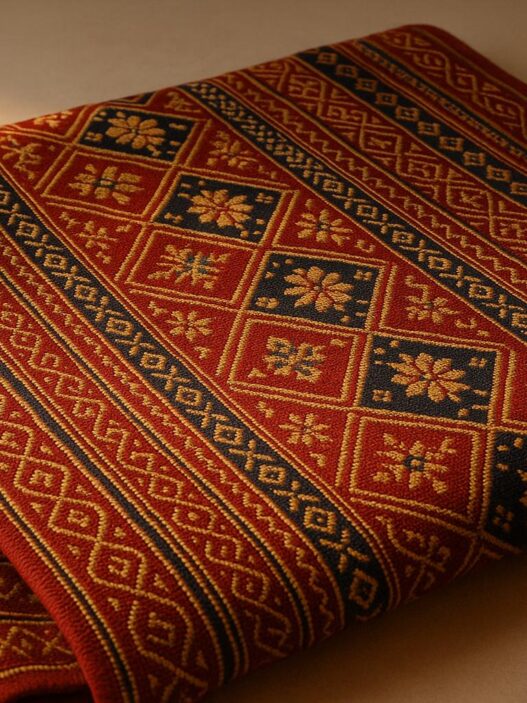Driving in Marrakesh can be challenging but manageable if you know the rules. Here’s what you need to keep in mind:
- Drive on the right side of the road. Legal driving age is 18, but car rentals often require you to be 21 or older.
- Seat belts are mandatory for front-seat passengers. Children under 10 must sit in the back.
- Using a phone while driving is illegal unless hands-free. Fines range from $80 to $800.
- Speed limits vary by road type. Follow posted signs to avoid fines.
- Police checkpoints are common. Keep your driver’s license, passport, vehicle registration, and insurance documents handy.
- Traffic can be unpredictable. Expect a mix of cars, scooters, bicycles, and even donkey carts.
Stay alert, drive cautiously, and be prepared for local driving habits like minimal use of turn signals and lane markings. Marrakesh’s streets demand patience and vigilance for a safe journey.
Main Driving Rules
Right-Side Driving and Age Limits
In Marrakesh, cars drive on the right side of the road, just like in the U.S. While the legal driving age in Morocco is 18, car rental companies often have stricter requirements. Most require drivers to be at least 21 years old, and some premium rentals set the minimum age at 25. When renting a car, make sure it comes with the required safety gear: a warning triangle, reflective jacket, and fire extinguisher.
Seat Belts and Phone Use
Front-seat passengers are required by law to wear seat belts. While rear-seat belt use isn’t enforced, it’s a good idea for everyone to buckle up, especially given the unpredictable traffic. Children under 10 must sit in the back seats, although there are no specific laws about using child safety seats.
Using a handheld mobile phone while driving is strictly forbidden unless you have a hands-free device. Fines for violating this law range from 800 to 8,000 MAD (about $80–$800). Below is a quick look at common traffic violation fines:
| Violation | Fine (MAD) | USD |
|---|---|---|
| No seatbelt | 300–450 | $30–$45 |
| Phone use | 800–8,000 | $80–$800 |
| Wrong-way driving | 1,200 | $120 |
Traffic Lights and Right-of-Way
Traffic lights in Marrakesh generally work the same way as in the U.S., but there are some local quirks to keep in mind. A solid red light means stop, and it’s best not to follow local drivers who might treat it as a yield sign. At unmarked intersections, the "priorité à droite" rule applies – drivers must yield to vehicles coming from the right. This rule is especially important in crowded areas like Jemaa el-Fnaa.
"The Royal Gendarmerie conducted 12,000 traffic stops in Marrakesh in 2023, focusing on tourist vehicles."
This highlights the need to stick to local traffic laws. Also, flashing amber lights are often used at night when regular signals are inactive. In these cases, proceed with caution, as standard right-of-way rules may not always be followed.
What is it like Driving In Morocco as a Tourist
Speed Rules and Police Stops
Understanding speed limits and having the right documents on hand is crucial when driving in Marrakesh.
Speed Limits by Zone
Speed limits in Marrakesh depend on the type of road. City streets have lower limits, open roads allow for moderate speeds, and highways permit faster driving. Always check and follow the posted signs to stay within the legal limits.
Police Checkpoint Guidelines
Police checkpoints are a regular occurrence in Marrakesh, especially during busy tourist seasons. If you’re stopped, stay calm and have your documents ready. Moroccan traffic officers usually ask for the following:
| Document | Details |
|---|---|
| Driver’s License | A valid license is required, and an International Driving Permit is highly recommended |
| Vehicle Registration | Keep this document easily accessible |
| Insurance Documents | Your insurance must be valid in Morocco |
| Passport or ID | Have your passport or another valid form of identification with you |
Being prepared helps ensure a smooth experience during any traffic stops.
Local Driving Habits
Driving in Marrakesh operates quite differently from what you might expect in the U.S. Lane boundaries are often ignored, and turn signals are seldom used.
Lane Changes and Signals
In Marrakesh, drivers frequently overlook lane markings and rarely signal their intentions. If you’re driving here, make it a point to always use your turn signals, check your mirrors consistently, and maintain a safe distance from other vehicles. These practices are essential for navigating the city’s streets, especially given the unique driving norms that require extra vigilance.
sbb-itb-fa26f1f
Road Safety Tips
These tips will help you navigate Marrakesh’s lively and often chaotic traffic with greater ease.
Types of Road Users
Marrakesh streets are shared by a mix of vehicles, including cars, scooters, bicycles, and even donkey-drawn carts. Add to that the unpredictable pedestrian crossings, especially in the medina, where narrow streets are packed with vendors, walkers, and vehicles all vying for space. Drive slowly, stay alert, and be ready to stop at any moment. The variety of road users calls for extra care and flexibility behind the wheel.
Safe Driving Methods
Driving in Marrakesh requires a cautious and alert approach. Here are some key tips to keep in mind:
- Intersections: Slow down well before reaching intersections, as unexpected movements are common.
- Night driving: If possible, avoid driving after dark. Reduced visibility and poorly lit vehicles can make nighttime driving riskier.
- Adjust your speed: Stick to or stay slightly below the posted speed limits, particularly in areas with heavy pedestrian activity.
When encountering donkey carts or heavily loaded bicycles, reduce your speed and only pass when you have a clear view ahead. Road conditions can vary widely – modern neighborhoods like Gueliz have spacious, well-maintained streets, while the medina’s older, narrower roads demand extra caution.
Pay special attention in crowded markets and the medina, especially at roundabouts, where drivers may not follow standard lane rules. Stay patient and vigilant to ensure a safe journey.
Tips for Tourists
Traffic Awareness
Driving in Marrakesh can be unpredictable, so it’s important to stay alert. Be prepared for sudden maneuvers by other drivers, and keep in mind that turn signals and horn usage might not match what you’re used to in the U.S. Staying focused is especially important when you’re planning to pass slower vehicles.
Passing Other Vehicles
When overtaking, take extra care. Always signal your intent and thoroughly check your surroundings before making a move. Local driving habits can be more informal, so only pass when you’re absolutely sure the road ahead is clear and safe.
Conclusion
Navigating Marrakesh’s streets requires more than just following traffic signs – it means understanding and adjusting to the city’s unique driving habits.
Stay alert and practice cautious driving to safely handle the bustling roads. Keep a safe distance from other vehicles, use turn signals consistently, and always make safety your top priority.
FAQs
What should I do if I come across a police checkpoint while driving in Marrakesh?
If you encounter a police checkpoint while driving in Marrakesh, stay calm and follow these steps:
- Slow down and stop as directed by the officers. Police checkpoints are common in Morocco and are usually routine.
- Have your documents ready, including your driver’s license, passport, vehicle registration, and insurance papers. Officers may ask to see these.
- Be polite and cooperative. Most interactions are straightforward and brief, especially if you have the required documents.
If you’re renting a car, ensure the rental company has provided all necessary paperwork, such as proof of insurance and a copy of the vehicle registration. Being prepared and respectful will help make the process smooth and hassle-free.
What local driving habits should tourists know to stay safe on Marrakesh roads?
Driving in Marrakesh can be an exciting but challenging experience due to its bustling streets and unique driving culture. To stay safe, tourists should be aware of a few key habits:
- Traffic can be unpredictable: Drivers in Marrakesh often navigate busy roads assertively, and it’s common for cars, scooters, and even pedestrians to share the same space. Stay alert and drive defensively.
- Roundabouts are everywhere: Traffic circles are a staple of Marrakesh roads. Yield to vehicles already in the roundabout and be cautious when entering or exiting, as drivers may not always signal.
- Honking is common: Honking is used as a form of communication rather than aggression. It often signals a warning or a driver’s presence, so don’t be alarmed.
By staying patient and aware, you can navigate Marrakesh’s roads safely and enjoy the adventure of driving in this vibrant city!
What should I know about keeping children safe while driving in Marrakesh?
Ensuring the safety of children while driving in Marrakesh starts with understanding and following local traffic rules. Moroccan law requires children under 10 years old to sit in the back seat, and it’s recommended to use an appropriate child car seat for younger children. Make sure the car seat meets safety standards and is securely installed.
Stay vigilant, as driving in Marrakesh can be fast-paced and unpredictable due to local customs. Always buckle up, follow speed limits (typically 60 km/h in urban areas and 100-120 km/h on highways), and watch out for pedestrians and motorbikes, which are common on the roads. Planning ahead and driving cautiously will help ensure a safer experience for you and your family.





